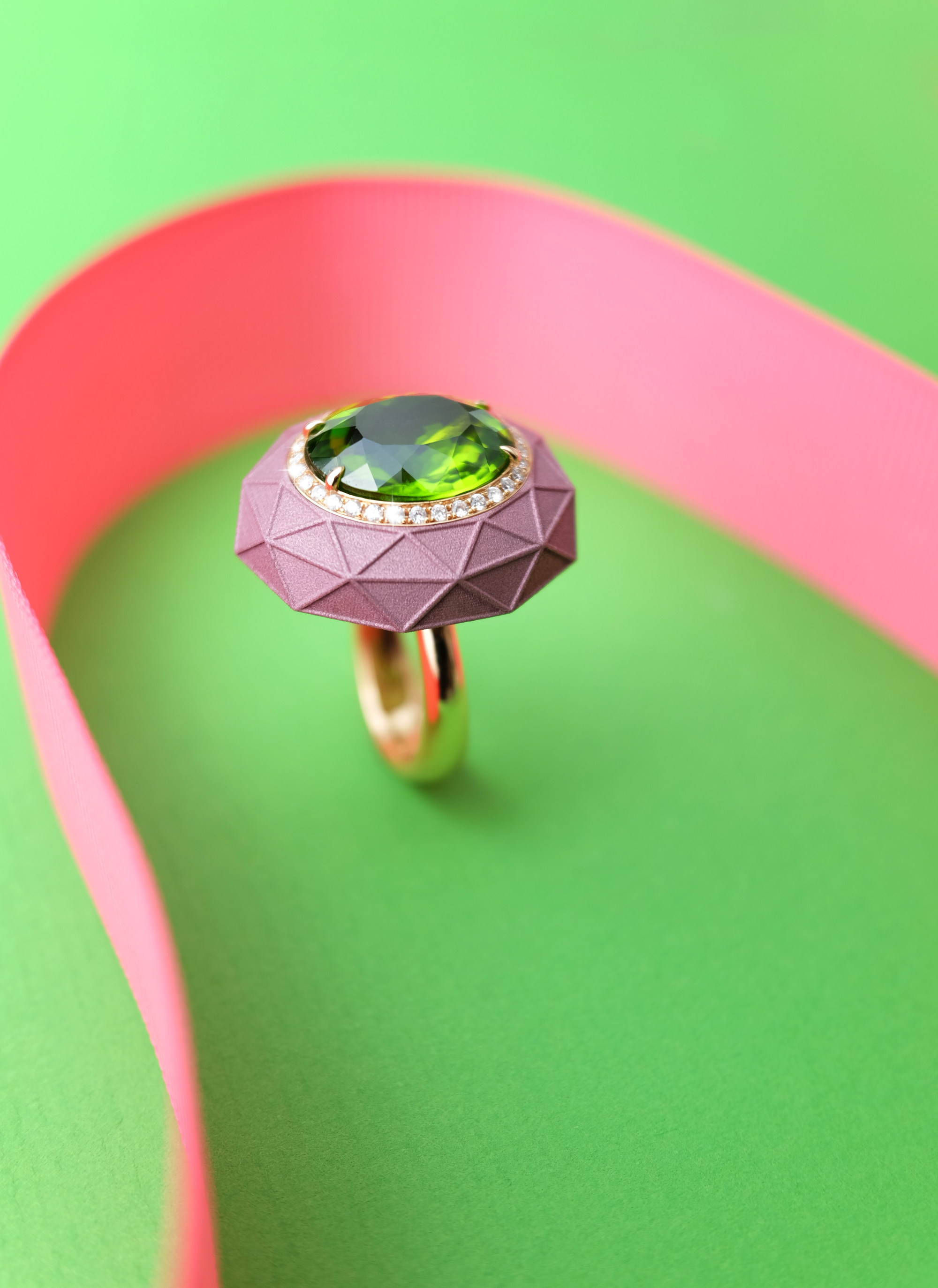Is gold getting old? How high jewellers fell for cheaper metals and bolder colours, from titanium at Chopard and aluminium at De Beers, to Boucheron’s silica aerogel and Hemmerle’s bronze infusions

Similarly, the gemstones themselves are the same, but when it comes to other materials used, there’s a quiet technical revolution going on in the use of new metal alloys, colourful coatings and finishes. Jewellery houses are pushing boundaries, producing evermore innovative ideas to create new narratives for their jewellery and to excite connoisseurs and collectors.

Boucheron’s use of aerogel – a fragile silica material created by Nasa that is 99.98 per cent water – enclosed in a shell of rock crystal for a pendant in its 2020 Contemplation high jewellery collection is an ideal example.
Claire Choisne at Boucheron is a creator with a visionary approach who explores cutting-edge technology to add an original twist to her jewellery. “I feel free to use materials that have an emotional value and aerogel to me expresses the beauty of the sky, which you couldn’t find in a diamond,” Choisne said at the launch.
Bling bust? Rolex is entering the second-hand market for the first time
The following year she collaborated with French materials producer Saint-Gobain to create an innovative iridescent coating for her Holographique collection. The hi-tech coating process involves applying layers of a molten spray of titanium and silver powder oxides on white ceramic and rock crystal. The resulting hues dance across the jewel as the light falls on from different directions.

“I wanted to create a collection around the topic of colour and find a new approach to the natural phenomenon of the rainbow and the Northern Lights,” Choisne explained.
The results were impressive, notably in the flexible Holographique necklace, which she described as “having a futuristic, hypnotic effect”.
Technical advancements with the metal have made new colours possible. Anodising titanium is an electrolytic process that produces a rainbow of hues, which can be chosen to match a gemstone.

More Hermès Birkins than Kylie Jenner: meet Aussie handbag queen Roxy Jacenko
Like titanium, “aluminium is a durable metal that is strong yet light in weight. It enabled us to create pieces with generous volumes and coloured surfaces to enhance the incredible coloured diamond selection,” said De Beers Jewellers’ CEO Céline Assimon. “Had we used only gold and diamonds instead of aluminium and titanium to support multiple diamond settings, the pieces would have been too heavy to wear,” she said.
However, the two metals require a very different expertise to that of working with gold. Assimon pointed out that it has been a learning curve, adding that, “the collection represents the most creatively and technically ambitious collection we have ever conceived and crafted, and this is the direction we want to follow”.
De Beers Jewellers is only 20 years old but has the benefit of leaning on 130 years of expertise with diamonds in the group, which presents them the opportunity to push boundaries.

Hemmerle is a German family-run jewellery house renowned for its craftsmanship and use of unconventional materials such as wood, bronze and aluminium in its high jewellery collections. In its latest collection, Infused Jewels, precious gems are set in delicate hand-sculpted aluminium flowers – inspired by those used in tea infusions – and on porcelain bisque blossom brooches. Aluminium’s natural strength and lightness provides them with the perfect opportunity to experiment.
“Its malleability enables us to focus on innovation and create intricate works which are delicate in design yet highly durable, while remaining true to our dedication to craftsmanship,” said Yasmin Hemmerle who runs the business with her husband Christian. “Through a process of anodising, we create aluminium in a variety of hues that complement the natural colours of the stones. The most challenging part is actually anodising aluminium,” she said.
4 OTT luxury trunks to jazz up your home with, from Louis Vuitton to Goyard

Monaco-based jeweller Sarah Ho tends to work with recycled gold, but during the pandemic lockdown, she began to add more colours and textures to her collections by using ceramics, and later on, a blended alloy that combines the strength of titanium and the lightness of aluminium.
“Both these metals can be anodised to create these amazing metallic and jewel tones that I was looking for,” said the designer who first used it for rings and earrings in her Bright Young Things collection. “This alloy is another element I use to bring more colour, texture and interest to my pieces. The seductive satin texture particularly brings a beautiful contrast to the warm silky sunshine tones of the 18-carat recycled gold, and enhances the gems that are set in it.”
Infiltrating the creative process with technology truly paves an exciting new era for jewellery design.

- Forget traditional gold and platinum – high-end jewellery houses are pushing boundaries, with designers like Wallace Chan and Cindy Chao favouring titanium for its strength and lightness
- Hong Kong’s Austy Lee still vouches for precious gold, but uses coatings like nano-ceramic e-coating, rhodium plating and enamels for colour, while Sarah Ho often works with recycled metals